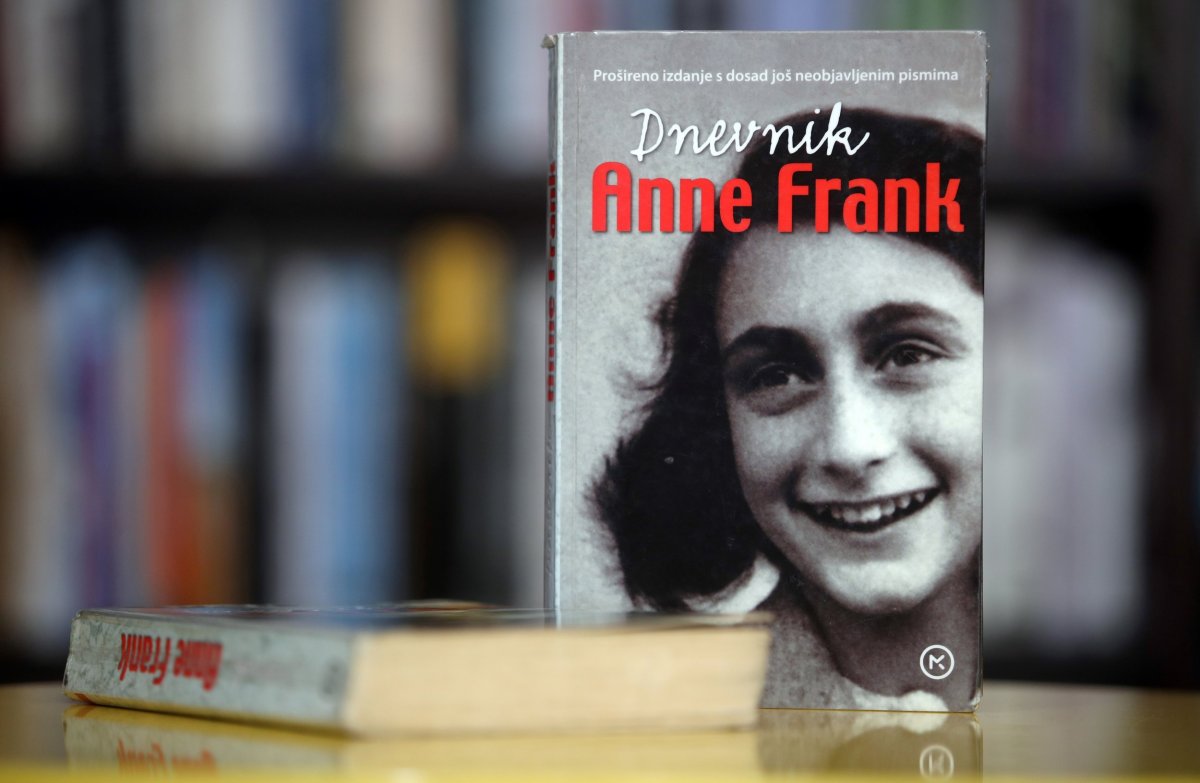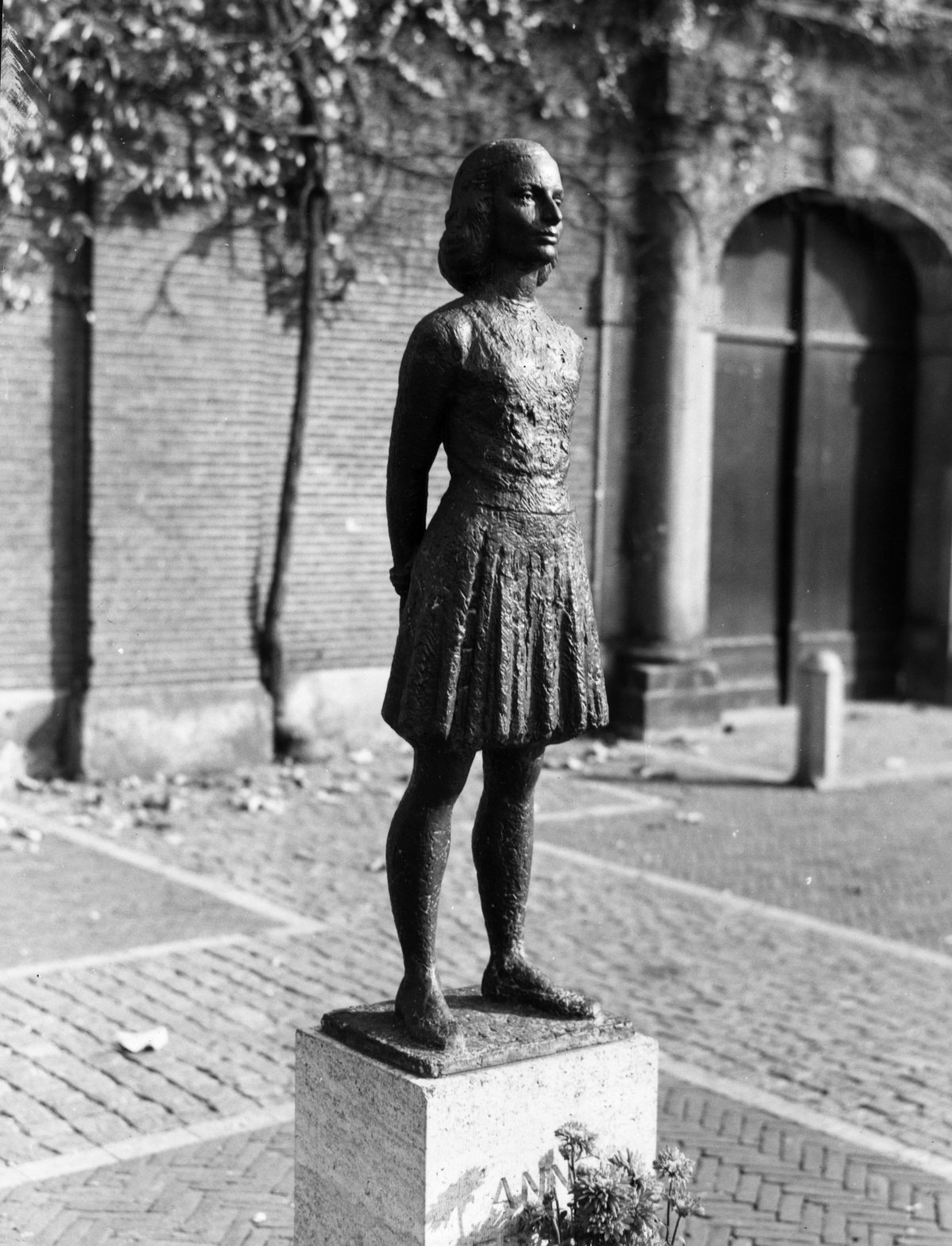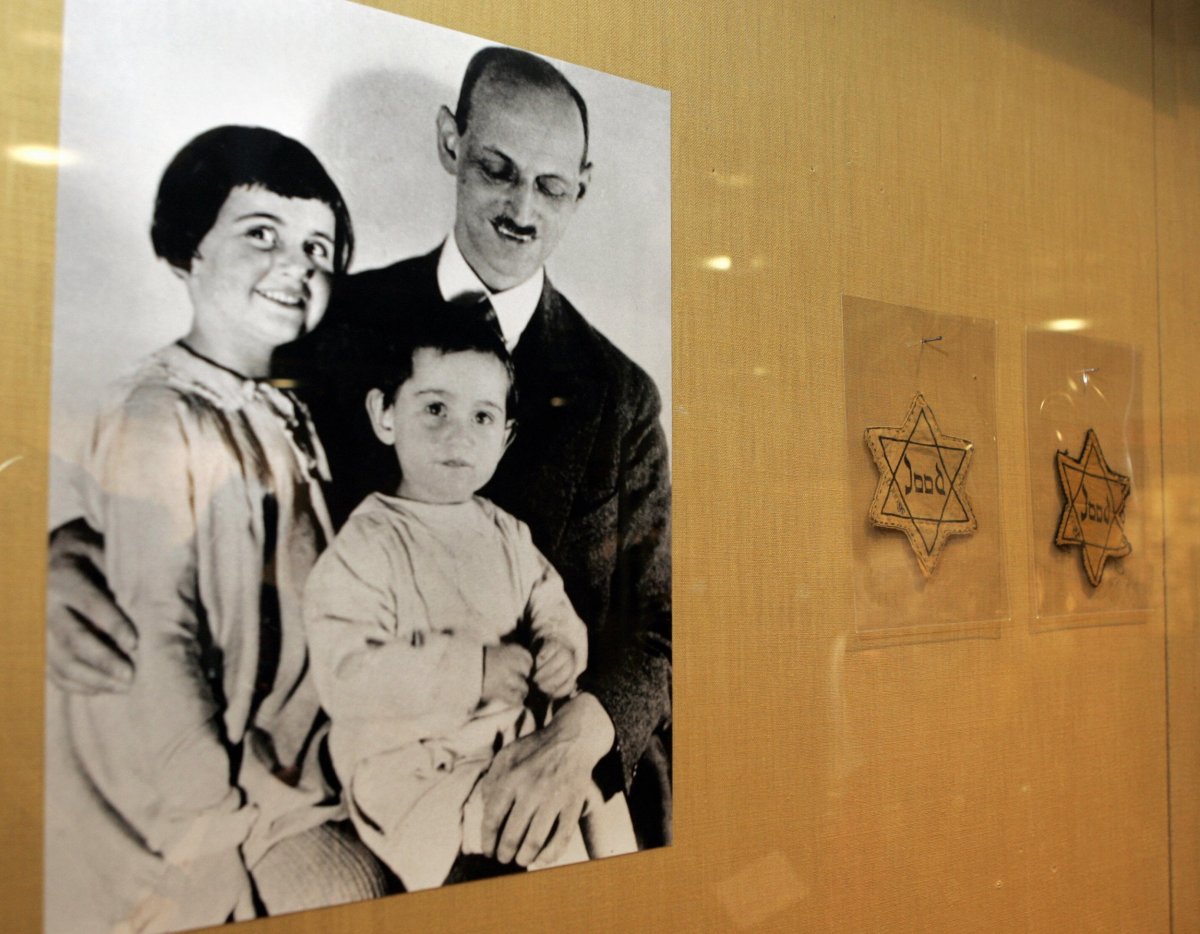Anne Frank was a Jewish schoolgirl, whose journal documenting her days hiding during the Nazi occupation of Holland is one of the most powerful documents to emerge from the embers of the Holocaust.
Nazi leader Adolf Hitler's troops took the Netherlands on May 15, 1940, soon after the outbreak of World War II. The occupying government then swiftly introduced prejudicial and antisemitic laws, including mandatory registration and public segregation of Jewish people.
Jews were forced to wear a yellow Star of David to identify themselves and were banned from using public transport, and from visiting parks, cinemas and non-Jewish stores.
The diaries dramatically stop, when two years later Frank and her family were discovered. The child died in the Bergen-Belsen concentration camp in 1945.

The final diary entry, written on August 1, 1944, ends introspectively; where she writes of "turning my heart inside out, the bad part on the outside and the good part on the inside," and of "trying to find a way to become what I'd like to be and what I could be if [...] if only there were no other people in the world."
A Timeline of Anne Frank's Life
Anne Frank was born in the German city of Frankfurt am Main in 1929, a time coinciding with Adolf Hitler's rise in popularity.
The combination of Hitler's rampant antisemitism and the prevailing poor economic situation persuaded the Franks to migrate to Amsterdam, the capital of the Netherlands.
Anne soon embraced her new home, learning the language and making new friends at a Dutch school. Not long after World War II began, the Nazis invaded the Netherlands, which soon resulted in the introduction of increasing discriminatory laws engineered to make the lives of Jewish people difficult.
On July 5, 1942, Anne's sister Margot was ordered to report to a "labor camp" in Nazi Germany, which their parents, Otto and Edith, were very suspicious about.
Consequently, in spring 1942, Otto began building a hiding place in the annex of his business premises at Prinsengracht 263. On her thirteenth birthday, on the eve of going into hiding, aspiring writer Anne was given the gift of a diary.
During the two years spent with her family in hiding, Anne detailed the quotidian events in the Secret Annex, in addition to describing her most private thoughts, as well as writing short stories. While writing her diary, Anne and the others in hiding were discovered and arrested by the police on August 4, 1944.
Frank and the people from the Secret Annex were put on transport to the Auschwitz-Birkenau concentration and extermination camp via the offices of the Sicherheitsdienst (the intelligence agency of the Nazi Party), a prison in Amsterdam, and the Westerbork transit camp.
In early November 1944, Anne was then deported to the Bergen-Belsen concentration camp with Margot, where they both died in February 1945 due to the camp's inhuman conditions.
Friends convinced Anne's surviving father Otto to publish Het Achterhuis (The Secret Annex), later called The Diary of a Young Girl when published in English. In June 1947, 3,000 copies of Het Achterhuis were printed. Readers were profoundly moved by the diary and the book was later translated into around 70 languages and adapted for stage and cinema.

Anne Frank's Diary: A Legacy
Otto Frank ensured The Diary of a Young Girl reached publication in 1947. It would be read around the world and translated into 70 languages.
Alain Goldschläger, Professeur émérite at the Département des Etudes Françaises and Director of the Holocaust Literature Research Institute, believes the book "raises an obvious question."
He told Newsweek: "Can any text provide a true representation of an inconceivable reality? This is the basic question posed to every reader, with enduring urgency, by Holocaust testimonies. It presents us with a famous conundrum, for although humility dictates that the answer to such a query should be 'no,' the silence which would be a true sign of respect is not really an option."
He continued: "Silence would inevitably lead to oblivion. The gradual surge that we have observed in the corpus of Shoah testimonial narratives has transformed the author from a witness to human agony into the preacher of a triumphant sermon of hope in the name of victorious resilience. All other voices are ostracized."
The academic argues a "reassessment" of the initial vision may lead readers to a more inclusive approach to Anne Frank's oeuvre.

"As an example, it may be instructive for us briefly to reconsider The Diary of Anne Frank. This extraordinary piece of writing rightfully deserves all the attention and accolades it receives, but perhaps we should step back for a moment to evaluate it critically in its context," Goldschläger said.
"Her book is in fact only the first chapter of the story of her life," he continued. "She describes a period of tolerable, if unpleasant, conditions. Anne herself did not write the second chapter of her story, however; rather, [Dutch author] Etty Hillesum provides us with it in her vibrant description of her parallel experience in Westerbork."
He added: "Would it be blasphemous for us to say that 'In truth, The Diary of Anne Frank is a fairly poor illustration of the Holocaust?' The world she describes still left her enough space to dream, whereas the missing destiny all but certainly forbade it.
"When I see her radiant smile of the adolescent, I also see the tortured face of a woman."
Uncommon Knowledge
Newsweek is committed to challenging conventional wisdom and finding connections in the search for common ground.
Newsweek is committed to challenging conventional wisdom and finding connections in the search for common ground.
About the writer
To read how Newsweek uses AI as a newsroom tool, Click here.








